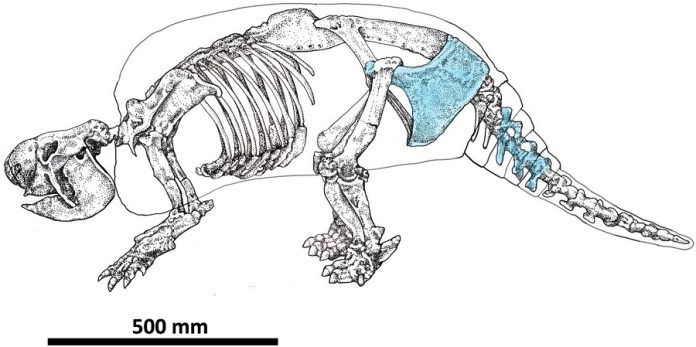
A recent study has uncovered evidence suggesting that humans in Argentina were butchering giant armadillo-like mammals over 21,000 years ago.
This discovery, published in the journal PLOS ONE by Mariano Del Papa from the National University of La Plata, Argentina, and his team, provides new insights into early human activity in South America.
The timeline of early human presence in South America has been a hotly debated topic among scientists.
Understanding when humans first arrived in the Americas is crucial for studying their migration patterns and their potential role in the extinction of large mammals at the end of the Pleistocene Epoch.
However, this research has been challenging due to the lack of direct archaeological evidence of early human activity and their interactions with animals.
In this study, researchers examined fossils of a glyptodont, a massive relative of modern armadillos, named Neosclerocalyptus.
These fossils were found along the banks of the Reconquista River in northeastern Argentina.
The team analyzed cut marks on parts of the glyptodont’s pelvis, tail, and body armor, using statistical methods to determine their origin.
They concluded that these marks were consistent with those made by stone tools and were located in areas likely targeted for their dense flesh, indicating butchery.
Radiocarbon dating of the fossils revealed they are around 21,000 years old, making them nearly 6,000 years older than previously known evidence of human presence in southern South America.
This pushes back the timeline for early human activity in the region and suggests that humans were present in the Americas much earlier than previously thought.
The findings align with other recent studies indicating that humans may have been in the Americas more than 20,000 years ago. These fossils also represent some of the oldest evidence of human interaction with large mammals shortly before many of these species went extinct.
The researchers suggest that further excavation at the site, more detailed analysis of the cut marks, and additional radiocarbon dating could provide even stronger evidence to support their findings.
Miguel Delgado, one of the study’s authors, noted, “The study’s evidence puts into question the time frame for the first human peopling of the Americas 16,000 years ago.”
This discovery sheds new light on the timeline of human migration into the Americas and their interactions with large mammals.
It highlights the importance of continued exploration and analysis to better understand the early history of human presence in this part of the world.



